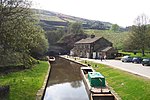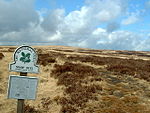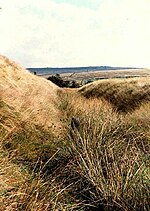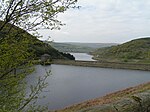Standedge
Standedge () is a moorland escarpment in the Pennine Hills of northern England between Marsden, West Yorkshire and Diggle, Greater Manchester. Standedge has been a major moorland crossing point since Roman times and possibly earlier. From east to west, Standedge is crossed by five generations of road crossing, the earliest a Roman road from York to Chester and the latest the A62 road. The Huddersfield Narrow Canal and the railway line from Leeds to Manchester pass underground in the Standedge Tunnels. The Pennine Way long-distance footpath passes through Standedge in a north–south direction along the Pennines. Much of Standedge is in the National Trust's Marsden Moor Estate. Administratively, Standedge is split between Kirklees and Oldham.
Excerpt from the Wikipedia article Standedge (License: CC BY-SA 3.0, Authors).Standedge
Manchester Road, Kirklees Saddleworth
Geographical coordinates (GPS) Address Nearby Places Show on map
Geographical coordinates (GPS)
| Latitude | Longitude |
|---|---|
| N 53.583197222222 ° | E -1.9690305555556 ° |
Address
Manchester Road
Manchester Road
HD7 6HU Kirklees, Saddleworth
England, United Kingdom
Open on Google Maps











